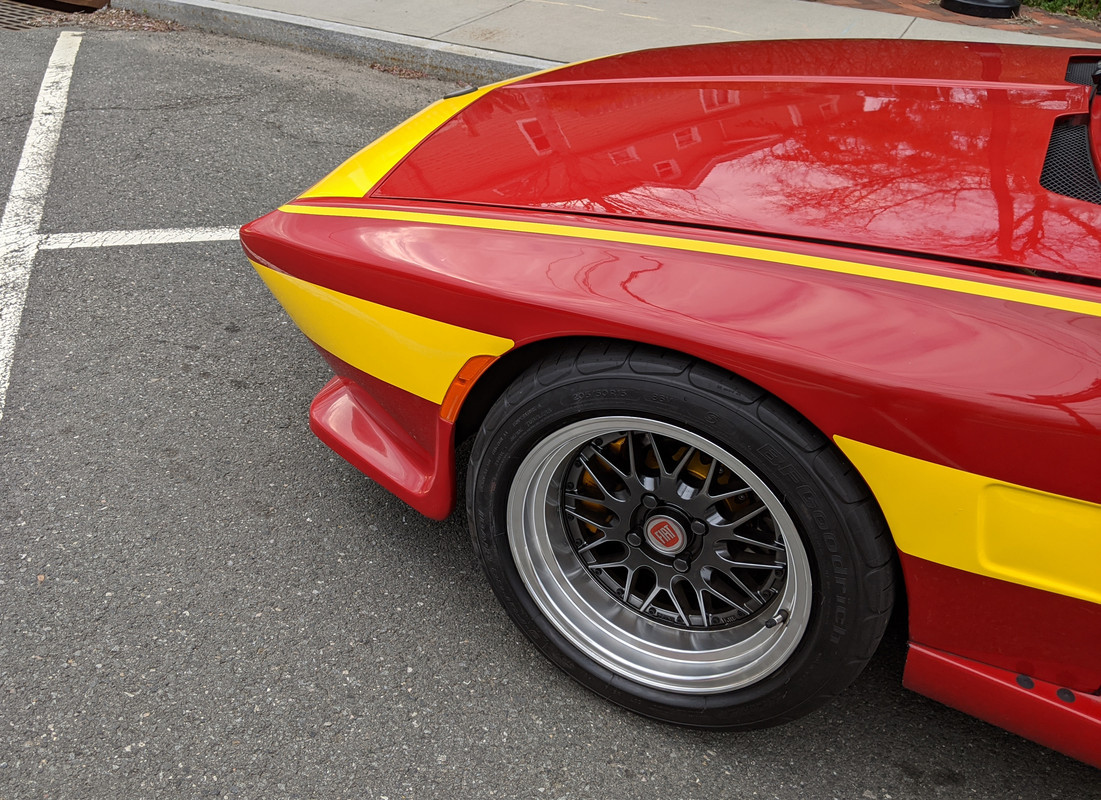Thanks guys for the confirmation re wheelbase - I expect I will have to massage the fiberglass.
The other thing I am curious about (and would like to see detail pics of) is the precise connection of panel to body - it appears that the fiberglass panels are molded to include a step/lap (whatever it's called) to allow for proper bonding - at least it appears that way for the rear panels by the targa sail/rear quarter. Would you mind detailing the attachment for the front fender tops and sills?
You are correct in that the rear fenders have a step molded in to allow the body panel to lap the fiberglass:
At the forward edge these attach to the B pillar lip:
At the rear the fenders attach to the bumper from the wheel well back. For the rear bumper the primary attach is to the original bumper mount location - I will need to fab up the attachment. I will also likely add some support at the bottom. Finally I will also tub out the inner wheel wells and attach to the fender/bumper.
On the front the fender attaches to the A pillar bulkhead:
The top of the fender slips over the hood rail and attaches there:
The front fender also attaches to the bumper from the wheel well forward.
Similar to the rear bumper, the front bumper attaches at the original bumper mount position, the second indentation is where the attachment point is (the first is for a signal light):
And of course the front wheel wells will also get tubbed out to the fenders and will provide additional attachment points. The front bumper will get additional support at the bottom.
For the sills, they attach along the bottom step of the door opening, and I expect I will have to make up something for the bottom to attach to:
I am mostly just feeling my way along, and will discover my errors and omissions during the course of the project. As you are undoubtedly aware, this is not a popular body kit and I have not seen anyone who has documented the install of it.


